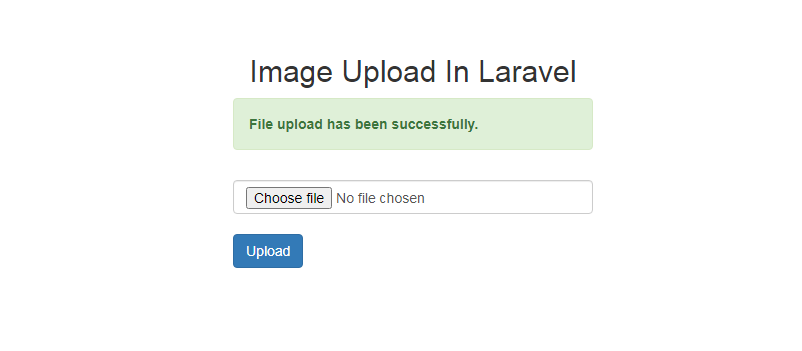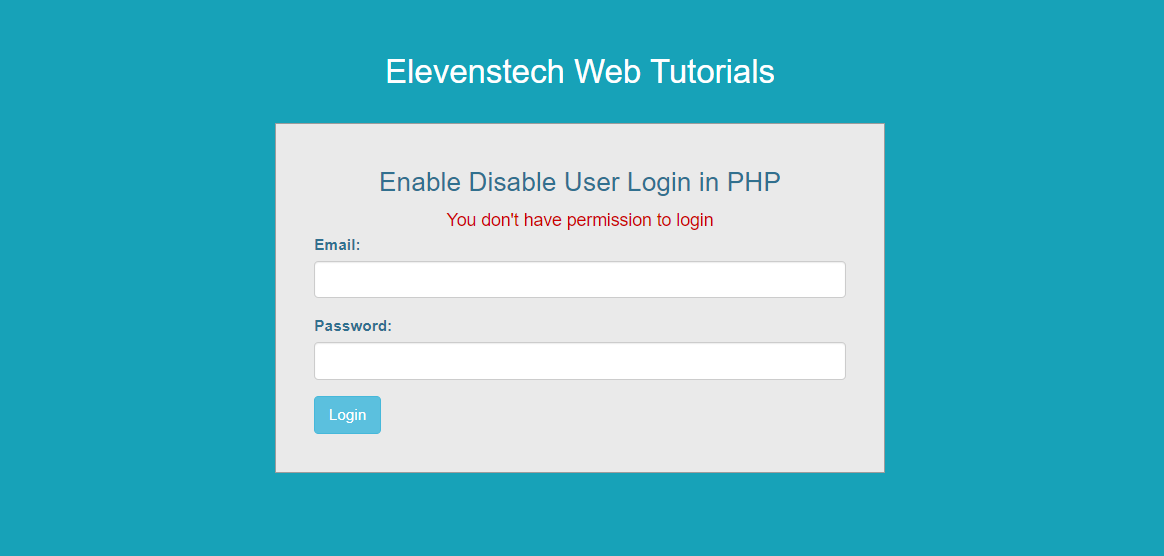PHP Tutorial
What is PHP Environment Setup of PHP PHP Syntax PHP Comments PHP Echo & print PHP Variables PHP Scope Variables PHP $ and $$ Variable PHP Constants PHP Operators PHP Data TypesPHP Conditional Statements
PHP Loop Type
PHP Arrays
PHP String PHP FunctionsPHP Form Examples
Form Intro Get & Post Form Validation / Required PHP Complete FormPHP Advanced
PHP Include / Require PHP Date & Time PHP Session PHP Cookies PHP File Handling PHP Open File PHP Read File PHP Write File PHP Append File PHP Delete File PHP File Upload PHP Sending Mail PHP Error HandlingForm Validation / Required
An HTML form contains various input fields such as text box, checkbox, radio buttons, submit button, and checklist, etc. These input fields need to be validated, which ensures that the user has entered information in all the required fields and also validates that the information provided by the user is valid and correct.
There is no guarantee that the information provided by the user is always correct. PHP validates the data at the server-side, which is submitted by HTML form. You need to validate a few things:
- Input length
- Empty String
- Validate String
- Validate Numbers
- Validate Email
- Validate URL
Input Length Validation
The input length validation restricts the user to provide the value between the specified range, for Example - Mobile Number. A valid mobile number must have 10 digits.
The given code will help you to apply the length validation on user input:
$mobileno = strlen ($_POST ["Mobile"]);
$length = strlen ($mobileno);
if ( $length < 10 && $length > 10) {
$ErrMsg = "Mobile must have 10 digits.";
echo $ErrMsg;
} else {
echo "Your Mobile number is: " .$mobileno;
}
Empty String
The code below checks that the field is not empty. If the user leaves the required field empty, it will show an error message. Put these lines of code to validate the required field.
if (emptyempty ($_POST["name"])) {
$errMsg = "Error! You didn't enter the Name.";
echo $errMsg;
} else {
$name = $_POST["name"];
}
Validate String
The code below checks that the field will contain only alphabets and whitespace, for example - name. If the name field does not receive valid input from the user, then it will show an error message:
$name = $_POST ["Name"];
if (!preg_match ("/^[a-zA-z]*$/", $name) ) {
$ErrMsg = "Only alphabets and whitespace are allowed.";
echo $ErrMsg;
} else {
echo $name;
}
Validate Number
The below code validates that the field will only contain a numeric value. For example - Mobile no. If the Mobile no field does not receive numeric data from the user, the code will display an error message:
$mobileno = $_POST ["Mobile_no"];
if (!preg_match ("/^[0-9]*$/", $mobileno) ){
$ErrMsg = "Only numeric value is allowed.";
echo $ErrMsg;
} else {
echo $mobileno;
}
Validate Email
A valid email must contain @ and . symbols. PHP provides various methods to validate the email address. Here, we will use regular expressions to validate the email address.
The below code validates the email address provided by the user through HTML form. If the field does not contain a valid email address, then the code will display an error message:
$email = $_POST ["Email"];
$pattern = "^[_a-z0-9-]+(\.[_a-z0-9-]+)*@[a-z0-9-]+(\.[a-z0-9-]+)*(\.[a-z]{2,3})$^";
if (!preg_match ($pattern, $email) ){
$ErrMsg = "Email is not valid.";
echo $ErrMsg;
} else {
echo "Your valid email address is: " .$email;
}
Validate URL
The below code validates the URL of website provided by the user via HTML form. If the field does not contain a valid URL, the code will display an error message, i.e., "URL is not valid".
$websiteURL = $_POST["website"];
if(!preg_match("/\b(?:(?:https?|ftp):\/\/|www\.)[-a-z0-9+&@#\/%?=~_|!:,.;]*[-a-z0-9+&@#\/%=~_|]/i",$website))
{
$websiteErr = "URL is not valid";
echo $websiteErr;
}
else
{
echo "Website URL is: " .$websiteURL;
}
Elevenstech Web Tutorials
Elevenstech Web Tutorials helps you learn coding skills and enhance your skills you want.
As part of Elevenstech's Blog, Elevenstech Web Tutorials contributes to our mission of “helping people learn coding online”.
Read More
Newsletter
Subscribe to get the latest updates from Elevenstech Web Tutorials and stay up to date

 Click to Join
Click to Join



